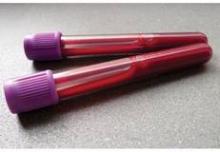Earn 0.25 hours AMA PRA Category 1 credit: Read this article, and click the link at the end to take the posttest.
Before new guidelines advocating universal screening for dyslipidemia at ages 9-11 years and again at ages 17-21 years, 2.8% of normal-weight children in the younger age group and 22% of those in the older age group underwent such screening, according to a report published online Aug. 26 in Circulation: Cardiovascular Quality and Outcomes.
Lipid screening also was low among obese children in these age groups at that time (30.6% and 34.6%, respectively), even though existing recommendations advised such screening in that patient population, said Dr. Karen L. Margolis of the HealthPartners Institute for Education and Research, Minneapolis, and her associates.
Data are scarce regarding lipid screening practices in the pediatric population, and no studies have yet examined these practices after the release of the recommendation for universal screening in 2011. Dr. Margolis and her associates focused on lipid screening practices during the 3-year period before the recommendations were issued, hoping to establish a benchmark for assessing changes in community practice patterns. They performed a secondary analysis of data collected in a retrospective cohort study of pediatric hypertension and obesity conducted in three large health care delivery systems. Their sample included 301,080 individuals in that cohort study, who were aged 3-19 years.
Overall, 9.8% of the children and adolescents had lipid testing with at least one measurement of total cholesterol. The number who underwent lipid screening increased with increasing patient age, increasing body mass index, and increasing blood pressure. Abnormal levels of total cholesterol were identified in 8.6% of the individuals, abnormal HDL-C levels were identified in 22.5%, abnormal non-HDL-C levels were identified in 12.0%, abnormal LDL-C levels were identified in 8.0%, and abnormal triglycerides were identified in 19%-38%, depending on age and sex, the investigators said (Circ. Cardiovasc. Qual. Outcomes 2014 August 26 [doi:10.1161/Circoutcomes.114.000842]).
"Although abnormal lipid values were more likely to be found in children with elevated BMI, we found some normal-weight children with a low level of HDL-C (12.6%) and a high level of non-HDL-C (6.9%). Thus, targeted screening for [overweight or obese] children would clearly miss some normal-weight children with lipid abnormalities, including [some] with LDL-C levels compatible with familial hypercholesterolemia," they noted. This suggests that more children will be newly identified with the recommended universal lipid screening of children.
This study was funded in part by the National Heart, Lung, and Blood Institute. Dr. Margolis reported no financial conflicts of interest; one of her associates reported ties with Sanofi.
To earn 0.25 hours AMA PRA Category 1 credit after reading this article, take the post-test here.

